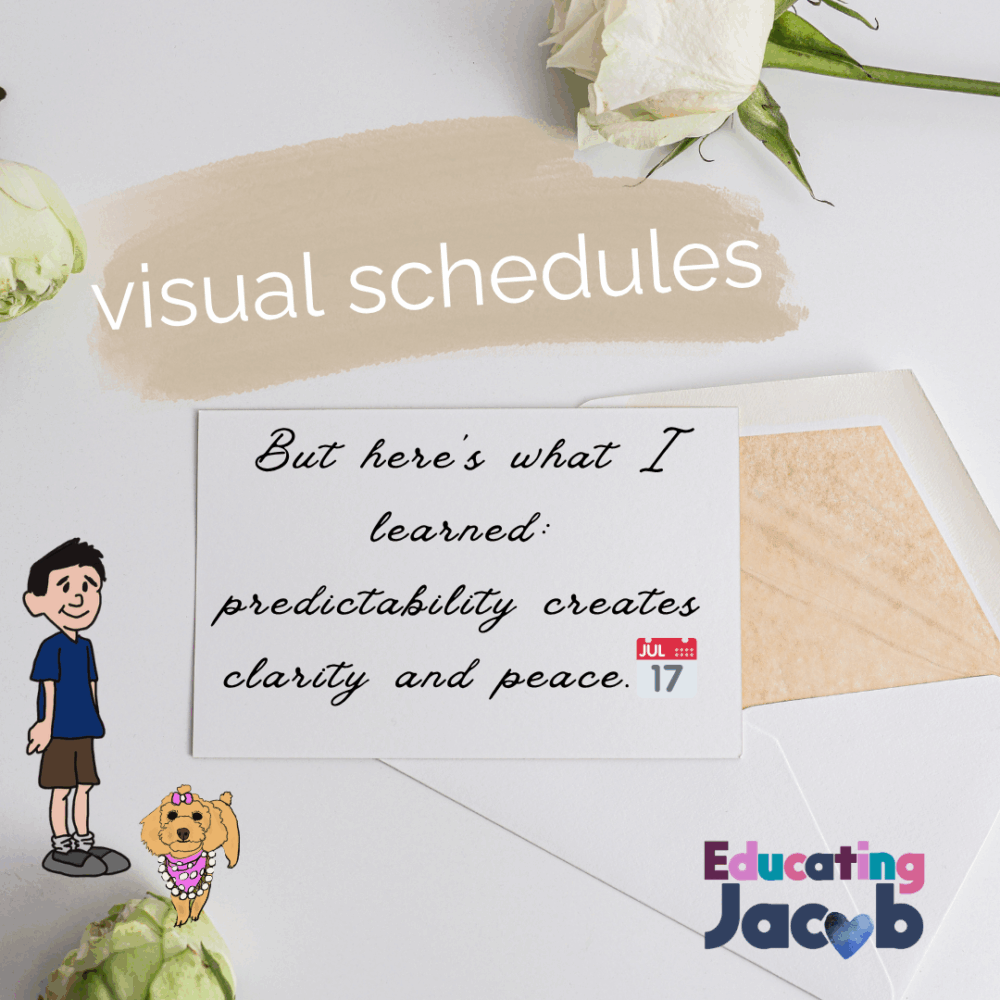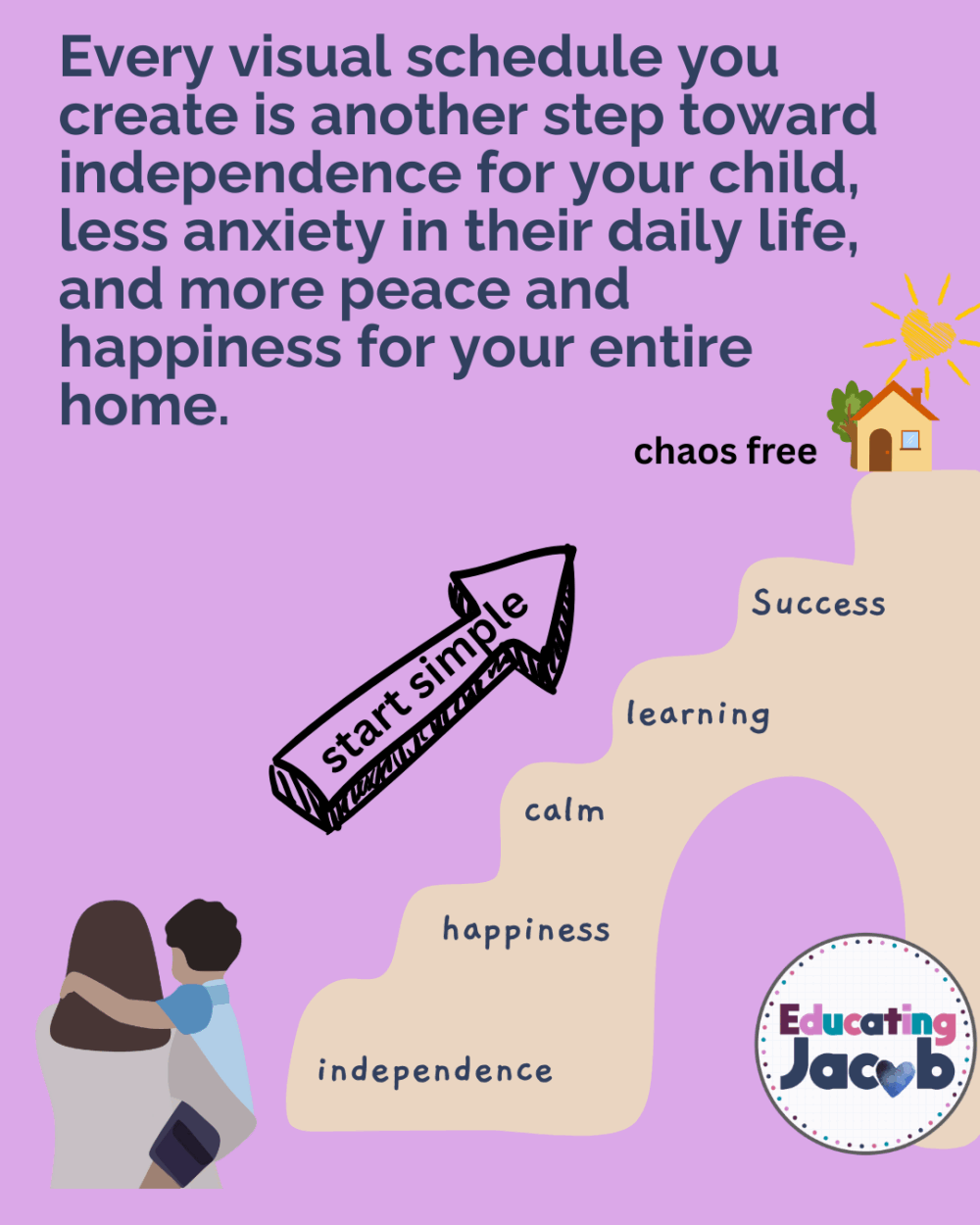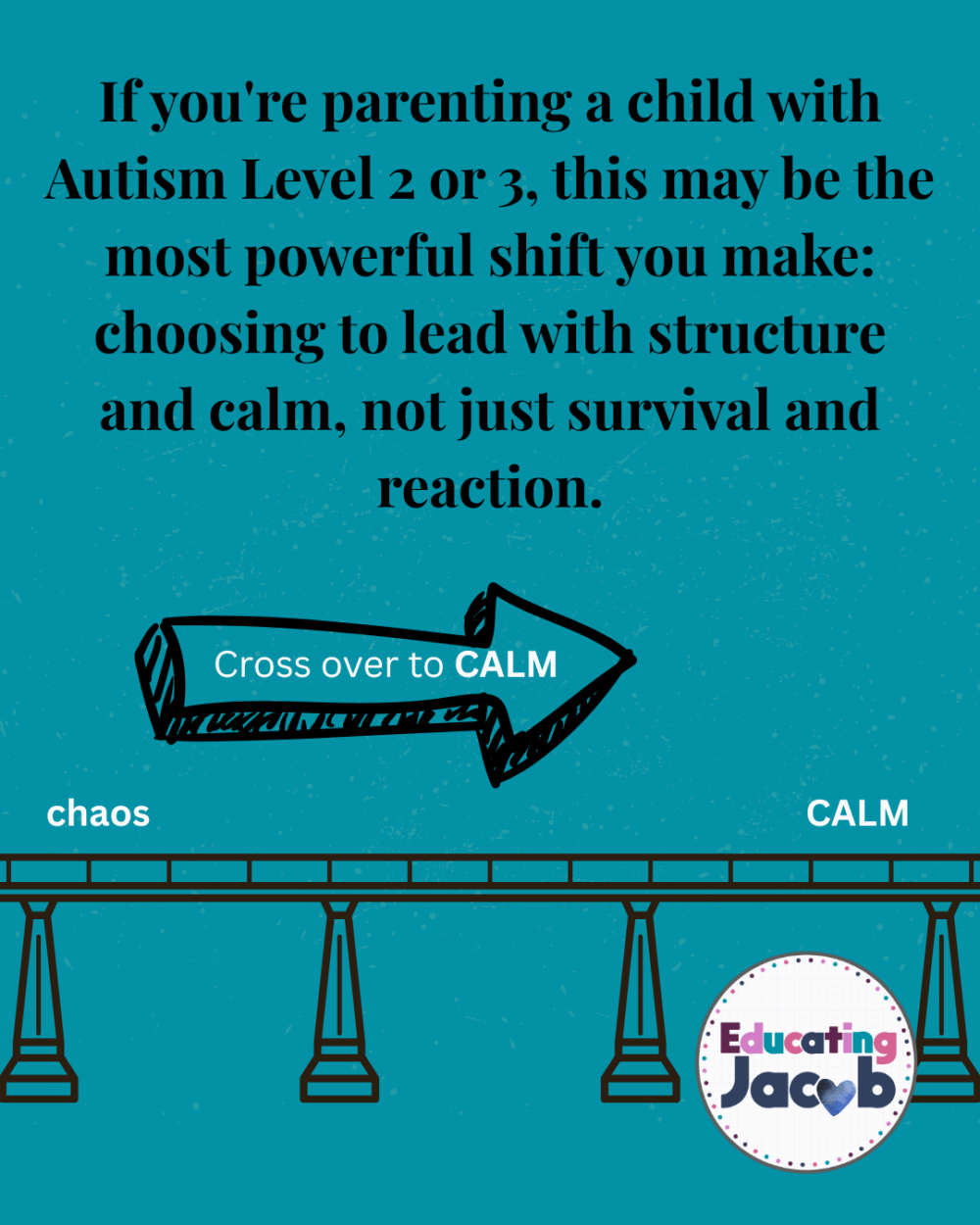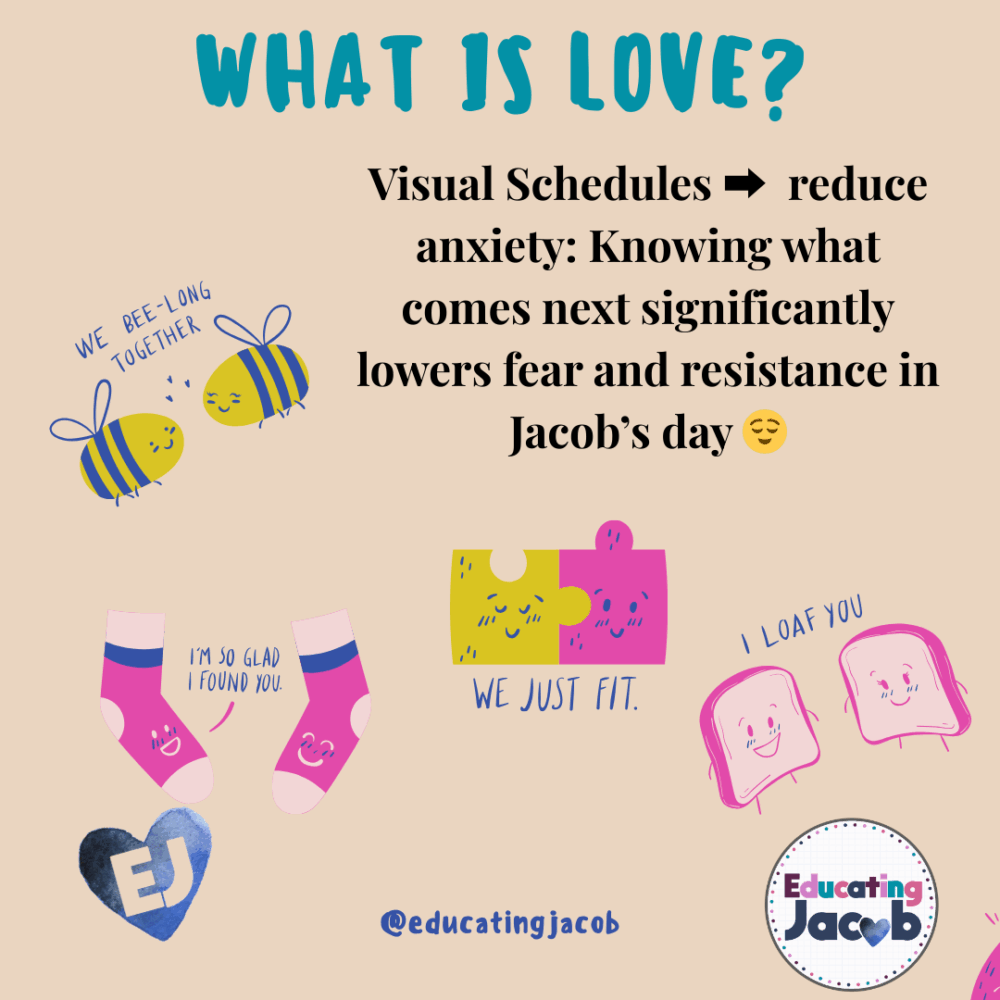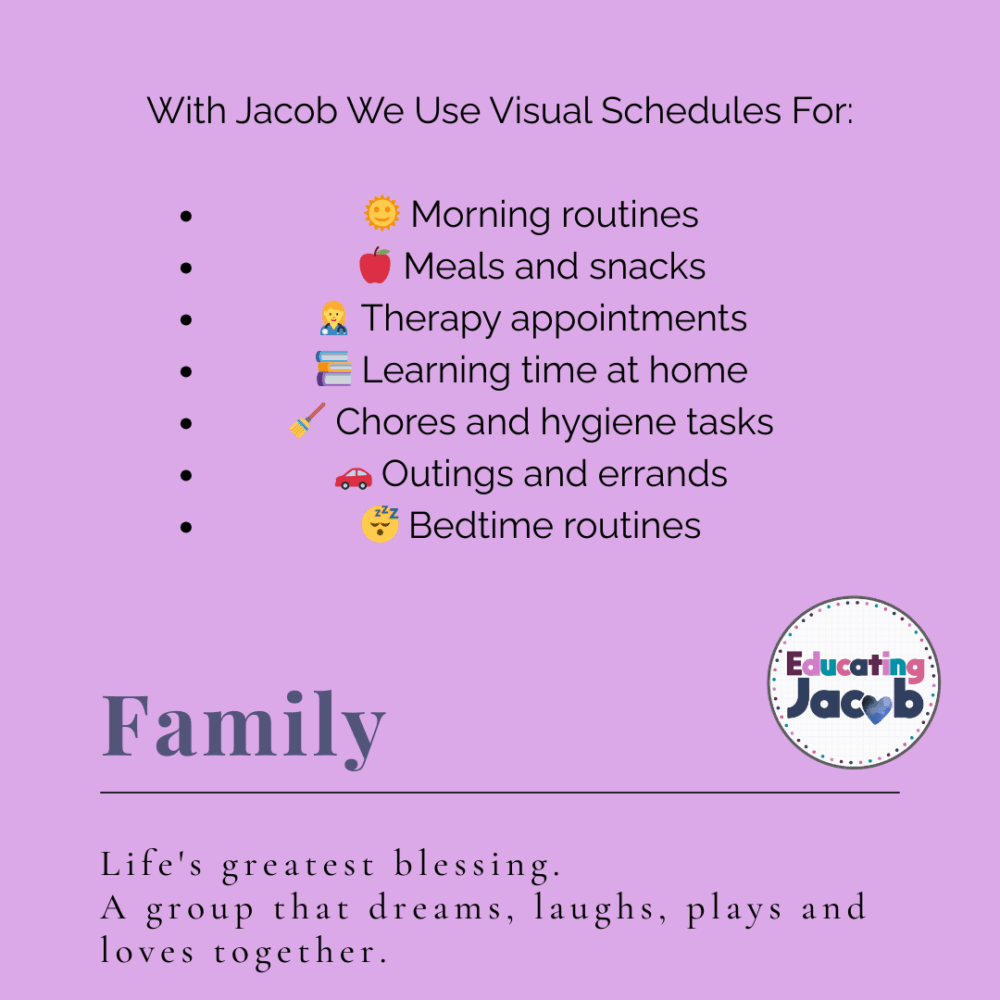Summer Structure = School Success: Why Kids with Autism Need Predictable Routines Now!
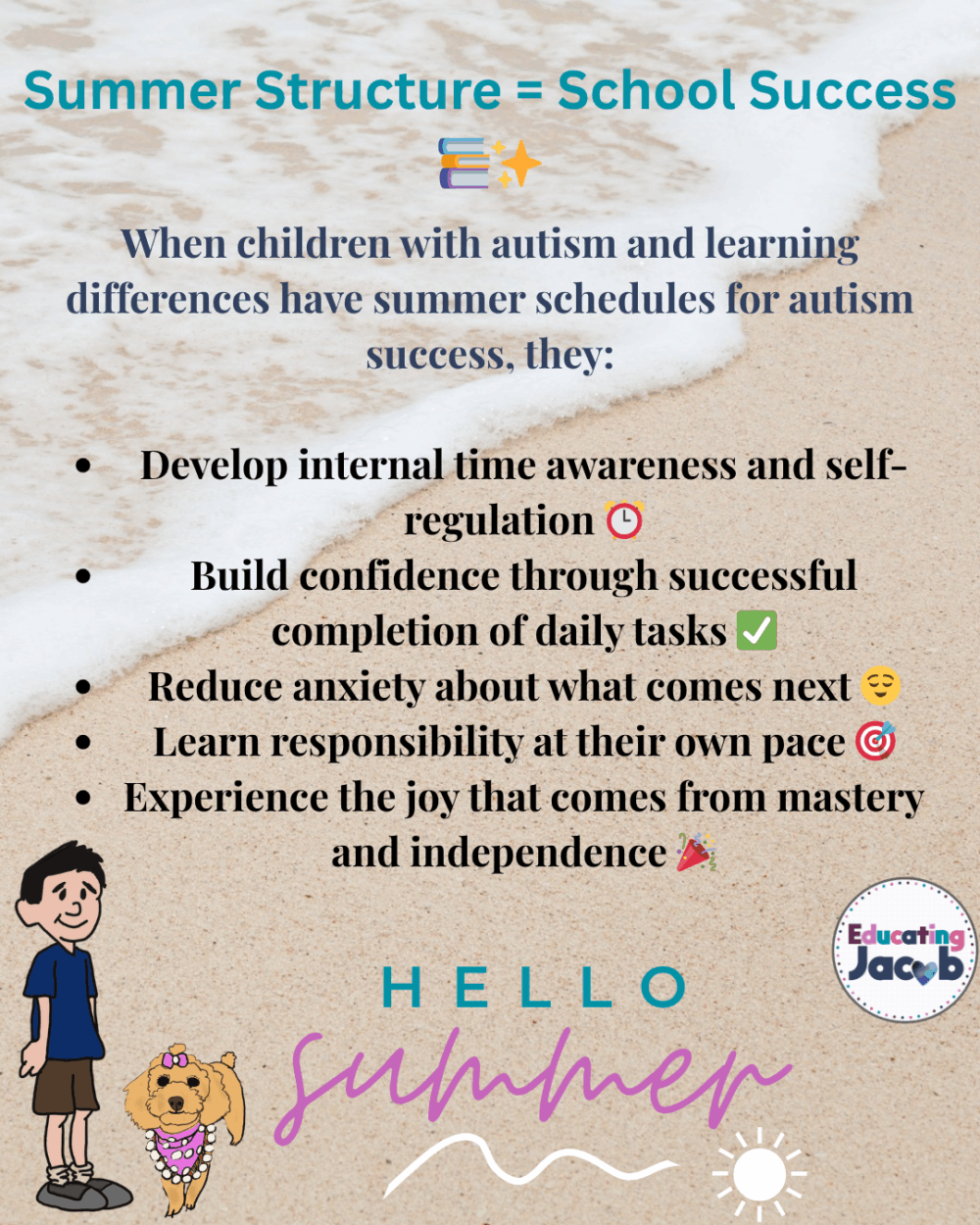
Summer Structure = School Success📚✨
Picture this: It’s the first day of school in September. While other parents are dealing with typical back-to-school jitters, you’re watching your child walk confidently into their classroom, knowing exactly what to expect from their day. They’ve already mastered the art of following schedules, taking on age-appropriate responsibilities, and moving through their routines with ease.
This isn’t a fantasy—it’s what happens when we use summer schedules for autism success as our secret weapon for school readiness. Create an autism friendly summer schedule for your child!
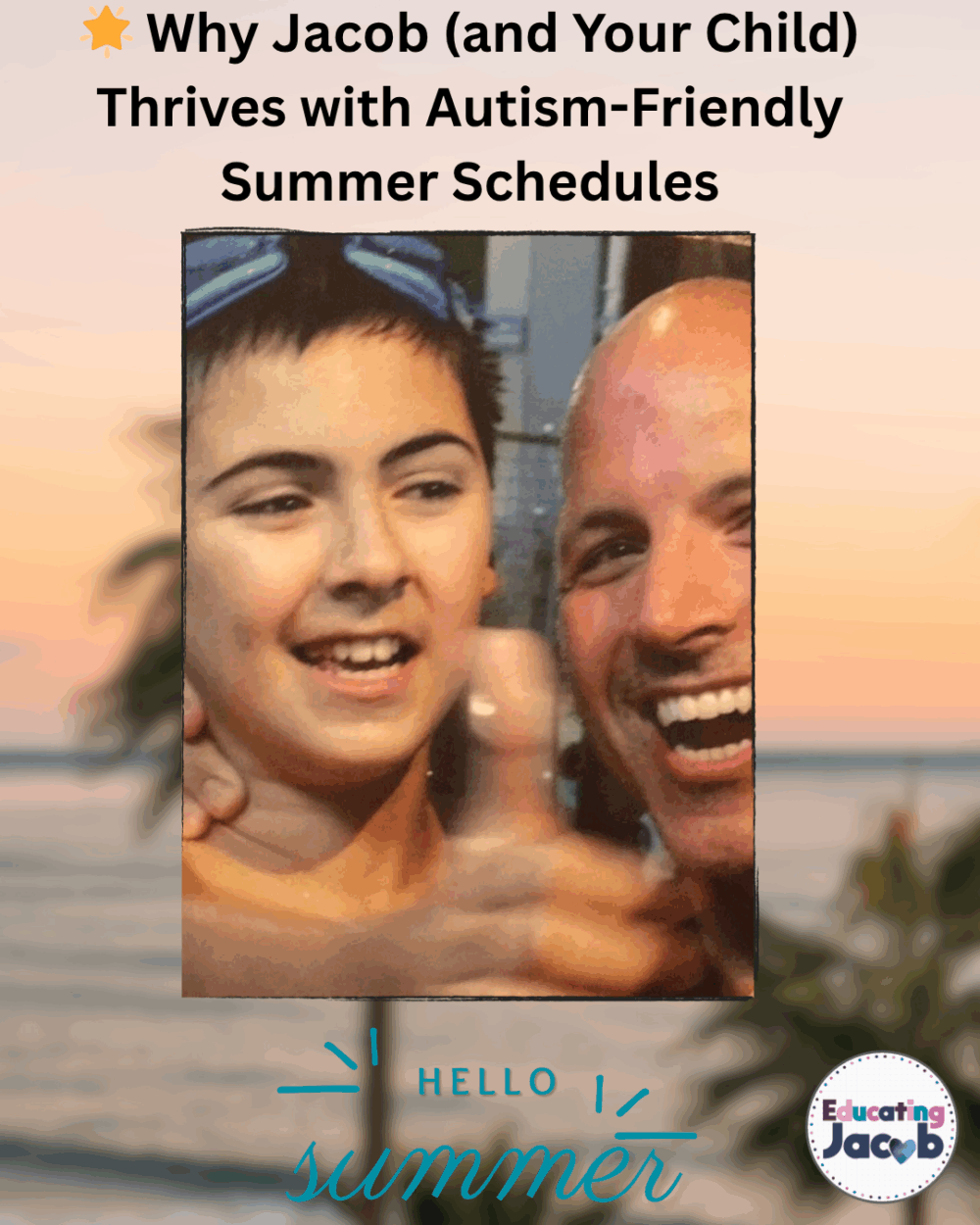
🌟 Why Jacob (and Your Child) Thrives with Autism-Friendly Summer Schedules
Let me tell you about Jacob. Like many children with autism, Jacob doesn’t just prefer structure—he needs it to feel happy and in control. Without predictable routines, his world feels chaotic and overwhelming. But when he knows what’s coming next, when he can count on consistent expectations, something magical happens: Jacob transforms from anxious and reactive to confident and capable.
Your child likely experiences the same transformation with structure. They’re not being “difficult” when they struggle with unexpected changes—they’re showing us exactly what they need to succeed.
🏖️ The Summer Advantage: Building Autism Success Before School Starts
Summer offers us something precious: uninterrupted time to build the foundation our children need. Instead of waiting for school to impose structure on our kids, we can teach them these vital skills in the comfort and safety of home.
When children with autism and learning differences have summer schedules for autism success, they:
- Develop internal time awareness and self-regulation ⏰
- Build confidence through successful completion of daily tasks ✅
- Reduce anxiety about what comes next 😌
- Learn responsibility at their own pace 🎯
- Experience the joy that comes from mastery and independence 🎉
🌊 The CALM Framework for Summer Success
The CALM framework isn’t just a catchy acronym—it’s a gentle, proven approach to creating the structured environment your child needs to thrive:
C: Consistent Action Forward Start small. Use schedules every day. You don’t need to create the perfect schedule overnight. Begin with just morning routines or bedtime schedules, then build from there. Consistency in small steps creates big changes over time.
A: Always Celebrate Wins Praise and reward each success. When your child follows their schedule, completes a task, or handles a transition well—celebrate it! These moments of recognition build the confidence they’ll need for school success.
L: Learning to Create Schedules Only add what your child can already do. Teach new skills before putting them on the board. This is crucial: your schedule should set your child up for success, not frustration. Master one routine before adding the next.
M: Mindset You are doing enough. You are making progress. One calm step at a time. Some days will be harder than others, and that’s okay. Every small effort you make toward structure is building your child’s foundation for future success.
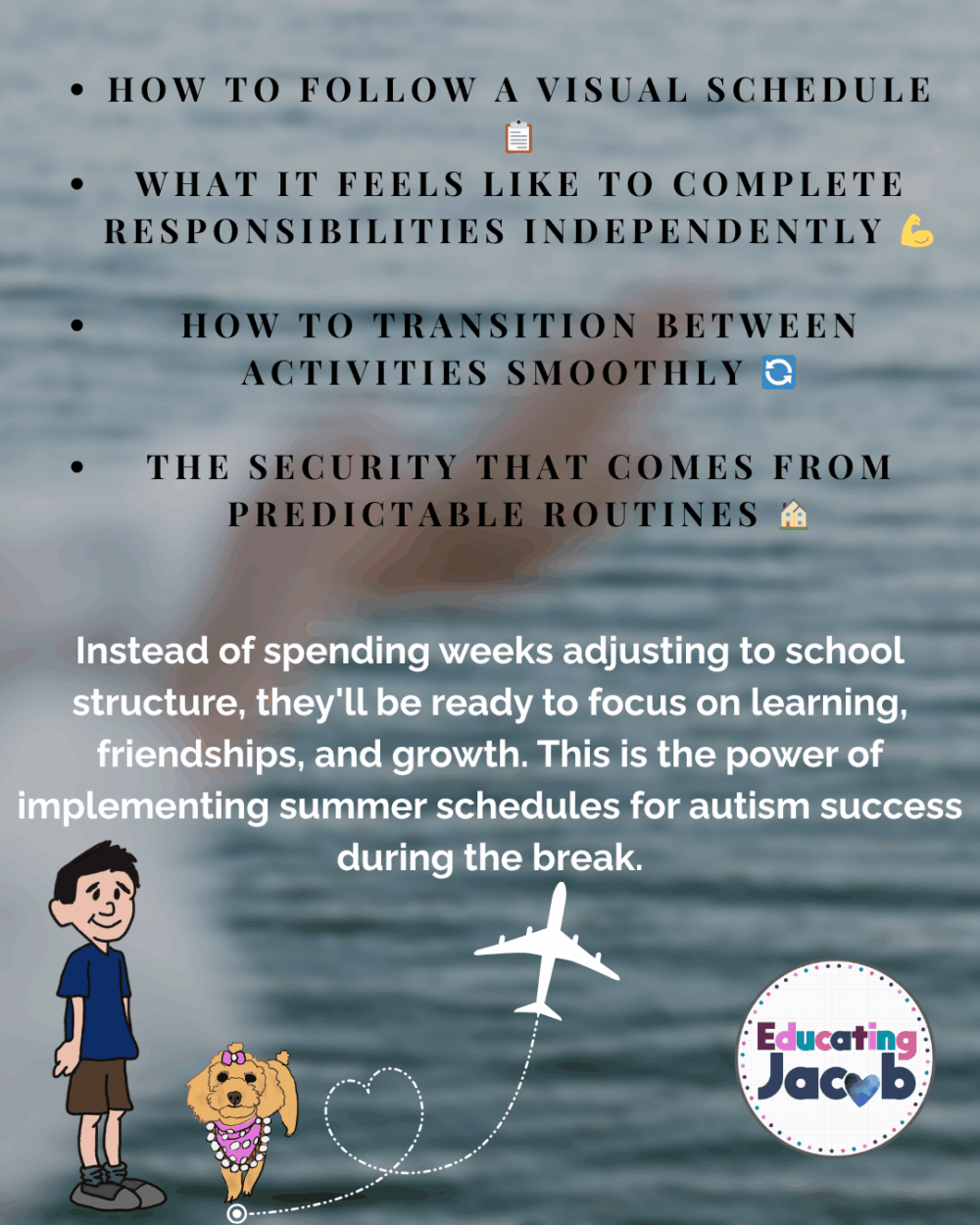
📖 From Summer Structure to School Success for Kids with Autism
When September arrives, your child won’t be starting from zero. They’ll already understand:
- How to follow a visual schedule 📋
- What it feels like to complete responsibilities independently 💪
- How to transition between activities smoothly 🔄
- The security that comes from predictable routines 🏠
Instead of spending weeks adjusting to school structure, they’ll be ready to focus on learning, friendships, and growth. This is the power of implementing summer schedules for autism success during the break.
🏡 Creating Your Family’s CALM Summer Schedule
Start small and build gradually. Maybe begin with a simple morning routine visual schedule. Once that’s mastered, add afternoon structure. Remember, the goal isn’t perfection—it’s progress and building your child’s confidence in their ability to handle structure successfully.
Consider creating a family calendar where everyone can see the week’s activities. Let your child help plan special outings or choose between structured activity options. When children participate in creating their structure, they’re more likely to embrace it.
👨👩👧👦 The Ripple Effect: When One Child’s Success Lifts the Whole Family
Jacob’s need for structure has actually blessed our entire family. When Jacob feels secure and happy in his routines, family life becomes more peaceful for everyone. Siblings benefit from the predictability too, and parents feel more confident and less stressed.
Your child’s journey toward independence and confidence will have the same positive impact on your family dynamic. https://www.merakilane.com/how-to-calm-an-autistic-child-31-tips-for-managing-autistic-meltdowns/
🤝 Join Us in the Autism Thrive Tribe Community
You don’t have to navigate this journey alone. The Autism Thrive Tribe is a community of parents who understand the unique joys and challenges of raising children with autism and learning differences. We share practical strategies, celebrate victories (big and small), and support each other through the tough days.
In our community, you’ll find:
- Detailed guides for implementing CALM frameworks in your home 📋
- Printable visual schedules and routine charts 🖨️
- Monthly live Q&A sessions for troubleshooting challenges 💬
- A supportive network of parents who truly understand your journey 💙
Ready to join us? [Click here to become part of the Autism Thrive Tribe today!] 🚀
📖 A Special Adventure Awaits: Jacob and Chloe’s Summer Structure Story
Coming next week: Join Jacob and his sister Chloe as they discover the magic of summer schedules! When Jacob feels worried about all the unstructured summer days ahead, Chloe helps him create a special summer adventure calendar. Together, they learn that structure doesn’t limit fun—it makes room for even bigger adventures! 🌟
Follow along as Jacob and Chloe show kids and families how CALM summer routines can lead to the most amazing summer ever. Perfect for reading together and helping your own children understand why structure helps everyone thrive. 👫
Remember, every small step toward structure is a victory worth celebrating. Your child’s future school success is being built right now, one summer day at a time. 🎉
What summer schedules for autism success will you start with first? Share your plans in the comments below—we love celebrating every family’s unique journey toward CALM! 💭


